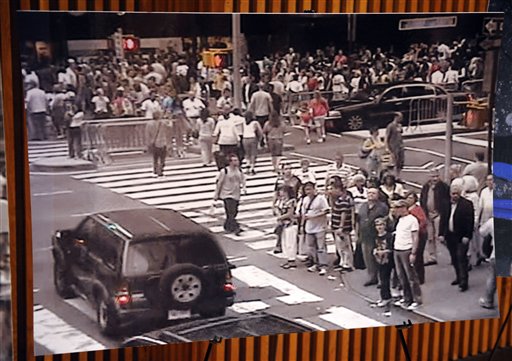
Tick. Tock. Tick. Tock.
It was a scene that could have been the plot of “24” – a t-shirt vendor in Times Square spots a smoky SUV on a hot afternoon, authorities rush to the scene to secure the area, New York officials return from a dinner party with the president in D.C. that evening, get briefed and address the media by early morning. And almost immediately – perhaps even a little miraculously – a suspect is arrested just before an international flight takes off.
And New York City is saved.
“I want to applaud the quick and coordinated response that led to the arrest of Faisal Shahzad, a suspect in the attempted Time Square bombing,” said New York City’s only Representative on the House Homeland Security Committee, Yvette Clarke, Tuesday, shortly after the Shahzad’s apprehension on an Emirates Airline flight to Dubai.
But instead of just surfacing the expected debate about the effectiveness of “no fly” lists and police budget cuts in the city, Shahzad, 30, a Pakistan-born naturalized American citizen, has also raised gun control issues.
Should the estimated 400,000 people on the “no fly” list, who are deemed to be potentially too dangerous to travel, also be deemed too dangerous to purchase fire arms?
Yes, says New York City Rep. Clarke.
Yes, says New York City Mayor Bloomberg.
Yes, says New York City Police Commissioner Kelly.
No, says South Carolina Sen. Lindsey Graham.
“Some people believe banning handguns is the right answer to the gun violence problem,” Graham told Bloomberg and Kelly in Washington. “I’m not in that camp.”
Graham says that of the list of 400,000, he guesses that a small percentage of that number are American citizens or legal residents – the only groups, he said, that can legally buy guns.
But critics say gun show loop holes and lax gun shops make gun ownership much more accessible, so that percentage could be much higher.
“I don’t get it,” said Clarke on WNYC Thursday morning. “Clearly, you know, some people believe in the right to bear arms at all costs. And unfortunately it may cost several lives.”
If Clarke, Bloomberg and Kelly get their way, no one on the “no fly” list be able to buy guns, whatever that percentage might be.
But as well intentioned as that law would be, it would still, in practice, be challenged by gun show loop holes that do no require background checks on people who buy guns at shows, and by gun shops that, well, are more concerned with their bottom line.